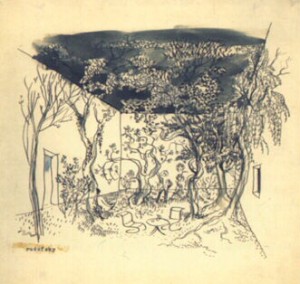Studio House & Conditioned Outdoor Room
Advanced Architecture is about complexity, and this last, far from being complicated, is the ability of combining or establishing simultaneity relations between the different layers of information available. The more relations are established, the more advanced the design will be.
By the other hand, the traditional architecture looks for the opposite, by depurating, minimizing and tranquillizing the complexity of a site.
However it indispensable to understand that “advanced” does not necessarily is translated in outlandish shapes. Complexity goes beyond forms to create relationships.
In the case of “Studio House” by F451 Arquitectura, designed in 2011 and located in Spain, the design merges from an hybrid typology, the combination between a modern house and an industrial warehouse. Its specific program requires 4 independent and different uses in a single volume.
In spite of being so inner, given that it does not interact too much with the outside views, this house responds to the positional relation, by its connection with the ground, from where it emerges, aligns and detaches. By the other hand, in this house it can clearly be seen environmental relations represented in the management of the main techniques for a sustainable design. A hallway that emerges from its center works not only as a space for relations between the different uses, but also as a climate regulator, allowing crossed ventilation, light and double orientation. Other aspects as water recollection, a green roof and the use of light from the north are also present. The atelier, whose illumination comes from the north, relates with the atmosphere by opening diagonal to the sky, introducing it as part of the composition, a ceiling that changes along with the environment. All these elements make the Studio House advanced.
To the naked eye it seems that the Advanced Architecture concepts are relatively new in the frame of the society. Nevertheless, some theoreticians started to think about them decades ago and such is the case of Bernard Rudofsky. The Conditioned Outdoor Room (1955) is focused on the garden as an habitable space. Historically, the garden has been considered as an habitable and private space. As an example of it, the materials used in the Roman gardens were no different for those used in the interior spaces, this made the garden another living room in the house, only this time with the sky as its ceiling, adding an atmospheric relation to their living spaces.
Through the years, the use of the garden evolved until becoming an ornament and an unoccupied space. The “spectator garden”, how the author calls it, is reinforced by the lack of control of the basics elements that allow habitability. Nowadays gardens are not longer private and comfortable spaces, on the contrary, they are totally open to the streets and susceptible to an uncontrolled climate.
As the author describes it, modern glass walls has contributed to the deformation on the concept of gardens. In this matter, I do think that the purpose of transparent walls may have intensified the new typology, however I think not everything needs to be controlled, and a piece of nature can be part of the indoors without the needs to close to the beauty of natural and spontaneous growth. Both can be achieved.
So far, climate control seems to end at the doorstep, man tends to feel more comfortable in spaces they can control. In spite of all the new technologies, climate control further have not been possible. However, Rudofsky takes as inspiration Pompeii ruins, where incomplete walls creates the best balances between the control achieved by manmade structures and nature. The wall seems to be the key element that provides privacy, physical container, aesthetic elements and the climate control by creating a protective area from wind and acting as a heating panel.
In this sense, it is needed to take a step back to the roots, to make the garden evolve in the right way and go back to be part of the house composition.
Personally I would like to focus research on self-sufficient architecture by studding not only the most recent designs but also its development for being able to find new alternatives to the existing methods.
Image from: grahamfoundation.org

